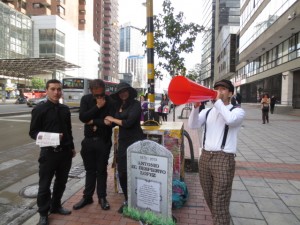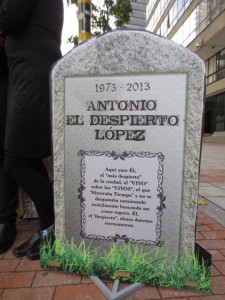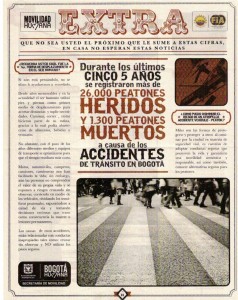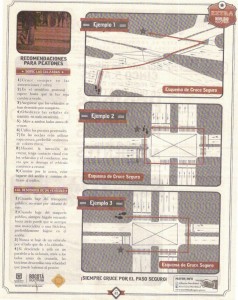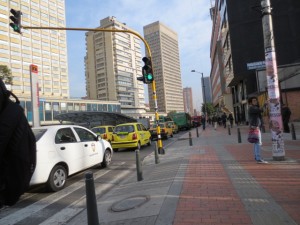Five years ago, I produced the blog here as a kind of “reports from the field” site, where I could share with friends and colleagues back home what I was up to, and also begin to process the kinds of themes I was encountering, in my ethnographic fieldwork on urban bicycle culture and politics in Bogotá, Colombia. Over 800 people followed it, and then it went…stagnant.
But I didn’t go stagnant on the research, writing, and thinking. The research I did in Bogotá–and the blog I produced here–got me thinking a lot about the complicated and contextual relationships between cyclists and bicycle infrastructure, sparked by the skepticism and selective use of bike lanes I found among Bogotano cyclists, who did not automatically trust the infrastructure built for them with much fanfare, or assume it was always appropriate for them to use. I ended up writing up these thoughts in an essay called “On the Mundane Significance of Bike Lanes…And the Pursuit of Anthropology in the Here and Now.” It was published here, in this book.
In developing that essay, it struck me that there is a kind of ‘common sense’ in the U.S., rooted in technological determinism, that “if you build it, they will come,” in other words, all you really need to get people to use the bicycle as a form of everyday urban transportation is bike infrastructure, especially bike lanes protected by bollards, planters, etc. which give a sense of security. Bogotá complicates that story–explained in my “On the Mundane Significance of Bike Lanes” essay–and there is plenty of critical thinking out there about it in the U.S. as well (such as here, and here). Adonia Lugo, another cultural anthropologist, has shared some very thoughtful and important writing and advocacy on the notion of ‘human infrastructure’ as a way to adapt the dominant discourse of contemporary traffic engineering while redirecting it from its technological reductionism.
Beyond the bicycle and bike lanes themselves as socio-technologies grounded in everyday social relations, what fascinates me about all this is the common-sensical notions that circulate around these matters, which (as we anthropologists are fond of saying) are neither common nor sensical. In other words, what might be constituted as ‘common sense’ in one cultural, geographic, or historical context seems strange or downright foolish in another. With that in mind, I launched on more systematic (meta)thinking about how that category of knowing–‘common sense’–intersects with and shapes discourse around urban bicycle use. In my college, when you are promoted to Full Professor, you are asked to deliver a kind of valedictory lecture on your work, so I decided to use mine to explore this topic in a lecture entitled “On the Anthropology of Bicycles and (Un)Common Sense, available here:
